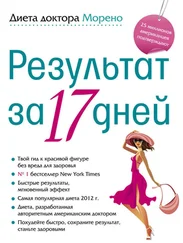Suzuki, S., et al. 2002. Intakes of energy and macronutrients and the risk of benign prostatic hyperplasia. American Journal of Clinical Nutrition 75(4): 689-97.
Tivesten, A., et al. 2009. Low serum testosterone and estradiol predict mortality in elderly men. Journal of Clinical Endocrinology and Metabolism 94(7): 2482-88.
Travison, T. October 2006. Online Edition. News release, The Endocrine Society. Journal of Clinical Endocrinology and Metabolism.
U.S. National Library of Medicine, National Institutes of Health. 2011. Enlarged prostate. www.nlm.nih.gov/medlineplus/ency/article/000381.htm
U.S. National Library of Medicine, National Institutes of Health. 2011. Saw palmetto. http://www.nlm.nih.gov/medlineplus/druginfo/natural/971.html.
Глава 14. Держите свою струю под контролем
8 Areas of Age-Related Change. 2007. NIH Medline Plus 2(1): 10-13. http://www.nlm.nih.gov/medlineplus/magazine/issues/winter07/articles/winter07pg10-13 .html.
American Cancer Society. 2012. Prostate cancer. http://www.cancer.org/Cancer/ProstateCancer/DetailedGuide/prostate-cancer-key-statistics.
Ballard, A., and H. Richter. 2011. Impact of obesity and weight loss on urinary and bowel incontinence. Menopausal Medicine 9(3).
Brown, J. S., R. Wing, E. Barrett-Connor, et al. 2006. Diabetes Prevention Program Research Group. Life-style intervention is associated with lower prevalence of urinary incontinence: The Diabetes Prevention Program. Diabetes Care 29(2): 385-90.
Culligan, P., and M. Heit. 2000. Urinary incontinence in women: Evaluation and management. American Family Physician 62(11): 2433-44.
Curhan, G. C. 2011. Nephrolithiasis. In: Goldman L, Schafer AI, eds., Cecil Medicine 24th ed., chap 128.
Finkielstein, V. A. 2006. Strategies for preventing calcium oxalate stones. Canadian Medical Association Journal 174(10): 1407-9.
Gerber G. S., and C. B. Brendler. 2007. Evaluation of the urologic patient: History, physical examination, and the urinalysis. Campbell-Walsh Urology, 9th ed., chap. 3.
Grandwohl, S., et al. 2005. Urinary tract infection. University of Michigan Health Sys tem. http://cme.med.umich.edu/pdf/guideline/uti05.pdf.
Hansen, A., et al. 2011. Older persons and heat-susceptibility: The role of health promotion in a changing climate. Health Promotion Journal of Australia 22(Spec. No.): S17-20.
Jaipadkee, S., et al. 2004. The effects of potassium and magnesium supplements on urinary risk factors of renal stone patients. Journal of the Medical Association of Thailand 87(3): 255-63.
Kontiokari, T., et al. 2003. Dietary factors protecting women from urinary tract infection. American Journal of Clinical Nutrition 29(2): 266-69.
Makary, M. A., et al. 2012. The impact of obesity on urinary tract infection risk. Urology 79(2): 266-69.
Marieb, E. N. 1998. Human Anatomy & Physiology. Menlo Park, Calif.: Benjamin/Cummings.
Mayo Clinic. September 30, 2011. http://www.mayoclinic.com/health/urine-color/DS01026.
The Merck Manuals: The Merck Manual for Healthcare Professionals. 2008. Dehydration. http://www.merckmanuals.com/home/hormonal_and_metabolic_disorders/water_balance/dehydration.html.
National Institute of Diabetes and Digestive and Kidney Diseases, National Institutes of Health. 2006. Prostate enlargement: Benign prostatic hyperplasia. Publication No. 07-3012.
National Institute of Diabetes and Digestive and Kidney Diseases, National Institutes of Health. 2007. Urinary incontinence in women. Publication No. 08-4132.
National Institutes of Health of the U.S. Department of Health and Human Services. 2007. Your urinary system and how it works. Publication No. 07-3195.
National Kidney Foundation. 2012. Urinary tract infections. http://www.kidney.org/atoz/content/uti.cfm.
Nikolavsky, D., and M. Chancellor. 2009. Stress incontinence and prolapse therapy assessment. Reviews in Urology 11(1): 41-43.
Pietrow, P. K., and G. M. Preminger. 2007. Evaluation and medical management of urinary lithiasis. In: Wein, A. J., ed., Campbell-Walsh Urology, 9th ed. Philadelphia: Saunders Elsevier, chap 43.
Plowman, S. A., Smith, D.L. 2011. Exercise Physiology for Health, Fitness and Performance, 3rd ed. Philadelphia: Wolters Kluwer Health/Lippincott Williams & Wilkins.
Sheehy, C. M., et al. 1999. Dehydration: Biological considerations, age-related changes, and risk factors in older adults. Biological Research for Nursing 1(1): 30-37.
Spector, D. A. 2007. Urinary stones. Principles of Ambulatory Medicine, 7th ed., 754-66.
Subak, L. L., C. Johnson, E. Whitcomb, et al. 2002. Does weight loss improve incontinence in moderately obese women? International Urogynecology Journal and Pelvic Floor Dysfunction 13(1): 40-43.
Subak, L. L., E. Whitcomb, H. Shen, et al. 2005. Weight loss: A novel and effective treatment for urinary incontinence. Journal of Urology 174(1): 190-95.
U.S. National Library of Medicine, National Institutes of Health. 2011. Urinary Tract Infections – Adults. http://www.nlm.nih.gov/medlineplus/ency/article/ 000521.htm.
UT Southwestern Medical Center. 2004. Excess body weight linked to formation of uric acid kidney stones, UT Southwestern researchers find. http://www.utsouthwestern.edu/newsroom/news-releases/year-2004/excess-body -weight-linked-to-formation-of-uric-acid-kidney-stones-ut-south-western -researchers-find.html.
Vulker, R. 1998. International group seeks to dispel incontinence «taboo.» Journal of the American Medical Association 11: 951-53.
Yale Medical Group. Urinary tract infections (UTIs). http://www.yaleme-dicalgroup.org/stw/Page.asp?PageID=STW024091.
Zeegers, M. P., F. E. Tan, E. Dorant, and P. A. van Den Brandt. 2000. The impact of characteristics of cigarette smoking on urinary tract cancer risk: A meta analysis of epidemiologic studies. Cancer 89(3): 630-39. http://www.ncbi .nlm.nih.gov/pubmed/10931463.
Глава 16. Очистить воздух от токсинов
Alcaraz-Zubeldia, M., et al. 2008. The effect of supplementation with omega-3 poly– unsaturated fatty acids on markers of oxidative stress in elderly exposed to PM. Environmental Health Perspectives 116(9).
Baldi, I., et al. 2011. Neurobehavioral effects of long-term exposure to pesticides: Results from the 4-year follow-up of the PHYTONER study. Occupational and Environmental Medicine 68(2): 108-15.
Bouchard, M. F., et. al. 2010. Attention-deficit/hyperactivity disorder and urinary metabolites of organophosphate pesticides. Pediatrics 6: e1270-77.
Bronstein, A. C., et al. 2009. 2008 Annual Report of the American Association of Poison Control Centers’ National Poison Data System (NPDS): 26th Annual Report. Clinical Toxicology 47: 911-1084.
Centers for Disease Control and Prevention (US); National Center for Chronic Disease Prevention and Health Promotion (US); Office on Smoking and Health (US). 2010. How tobacco smoke causes disease: The biology of behavioral basis for smoking-attributable disease: A Report of the Surgeon General.
Environmental Working Group. Executive Summary, Shopper’s Guide to Pesticides in Produce. http://www.ewg.org/foodnews/summary/.
Fang, Y. Z., et al. 2004. Glutathione metabolism and its implications for health. Journal of Nutrition 134(3): 489-92.
Feldman, J., et al. 2010. Wide range of diseases linked to pesticides. Beyond Pesticides: Pesticides and You 30(2).
Grodstein, F., et al. 2012. Exposure to particulate air pollution and cognitive decline in older women. Archives of Internal Medicine 172(3): 219-27.
Hoek, G., et al., 2002. Association between mortality and indicators of traffic– related air pollution in the Netherlands: A cohort study. Lancet 360(9341): 1203-9.
Jafri, A. B. 2011. Aging and toxins. Clinics in Geriatric Medicine 24: 609-28.
Читать дальше
Конец ознакомительного отрывка
Купить книгу
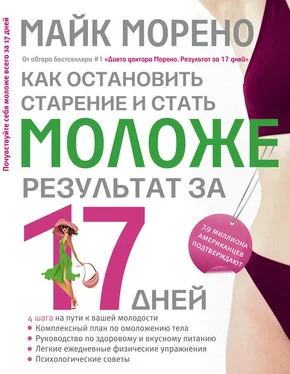

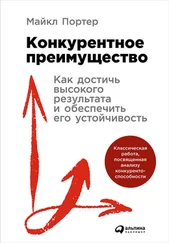
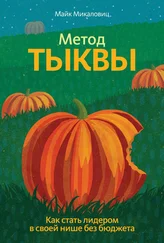

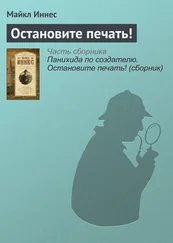

![Артем Сенаторов - Результат [Бизнес-роман о том, как стать предпринимателем, заработать денег и не сойти с ума] [litres]](/books/392959/artem-senatorov-rezultat-biznes-thumb.webp)



